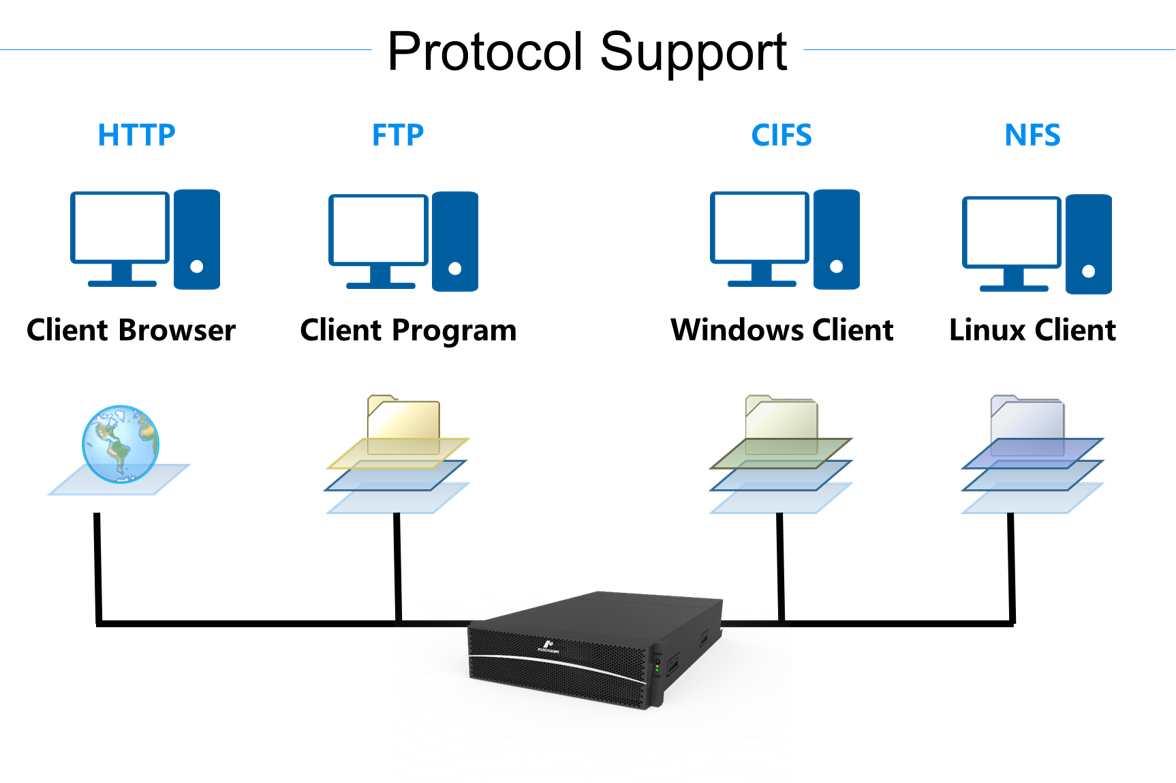MacroSAN ODSP system uses SAN and NAS parallel architecture to build unified storage, realizing both block and file functions in one device. The virtualized storage resource pool(Pool) created based on CRAID is used to save data, and the storage capacity resources are shared for SAN and NAS services. The space management subsystem is built on top of Pool to maintain the mapping relationship between logical space and physical space of each service object (including blocks and files). The spatial subsystems for SAN and NAS are completely parallel and independent of each other. Independent space management, independent protocol resolution, regardless of SAN or NAS, through the shortest software stack and optimal IO path, while achieving the highest access efficiency. Realize multiple stacks in one machine and parallel access through parallel architecture.
Realize both SAN and NAS functions in one appliance, no longer needing a NAS gateway and reducing overall costs by 30%.
The parallel architecture design of ODSP of MacroSAN Technology has simpler software stacks and shorter IO paths; SAN and NAS share Cache, and memory resources are dynamically adjusted according to SAN/NAS business pressure; SAN/NAS share system IO scheduling, and unify the coordination of CPU resources; and at the same time, it cooperates with the QoS technology and the flow control mechanism, to avoid the resource scrambling. In the use of system resources, SAN and NAS are fully integrated. Through the deep optimization of the architecture, SAN and NAS get high performance at the same time. Compared with the traditional architecture of stacking NAS gateway on top of SAN system, the ODSP storage network based on HFH is simpler and more convenient to deploy, and adopts unified management page to reduce the complexity and increase the efficiency by half. This not only saves a lot of purchasing cost, but also improves the management and maintenance as well as the operability of backup and the security of all data, and reduces the total cost of ownership.
Based on the ODSP of HSSC, it develops rich value-added software, including advanced software functions such as deduplication and compression, remote replication, dual-living, etc., which comprehensively improves the efficiency and reliability of storage and meets the business requirements of different scenarios.




 Products and Solutions
Products and Solutions
